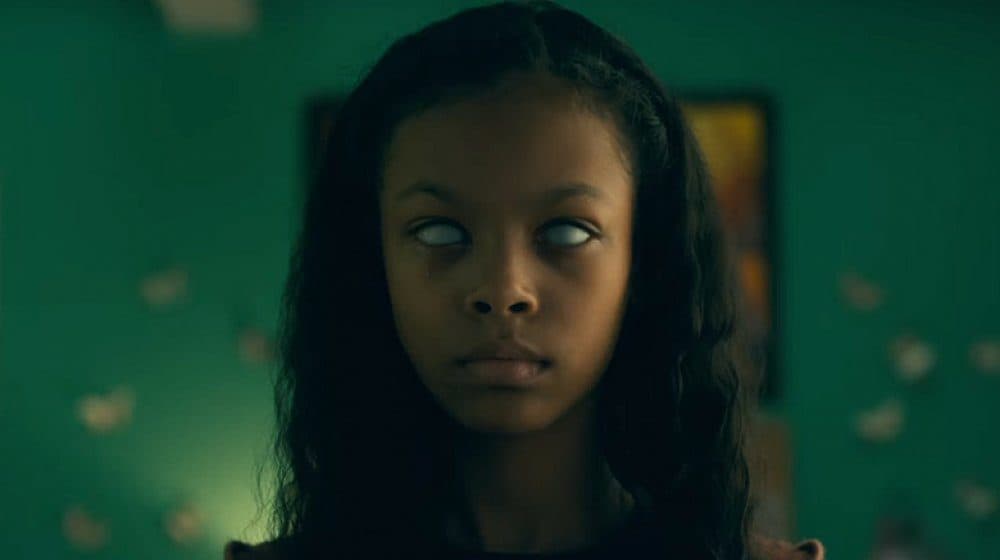Editorials
Mia from ‘Evil Dead’ – A New Kind of Final Girl
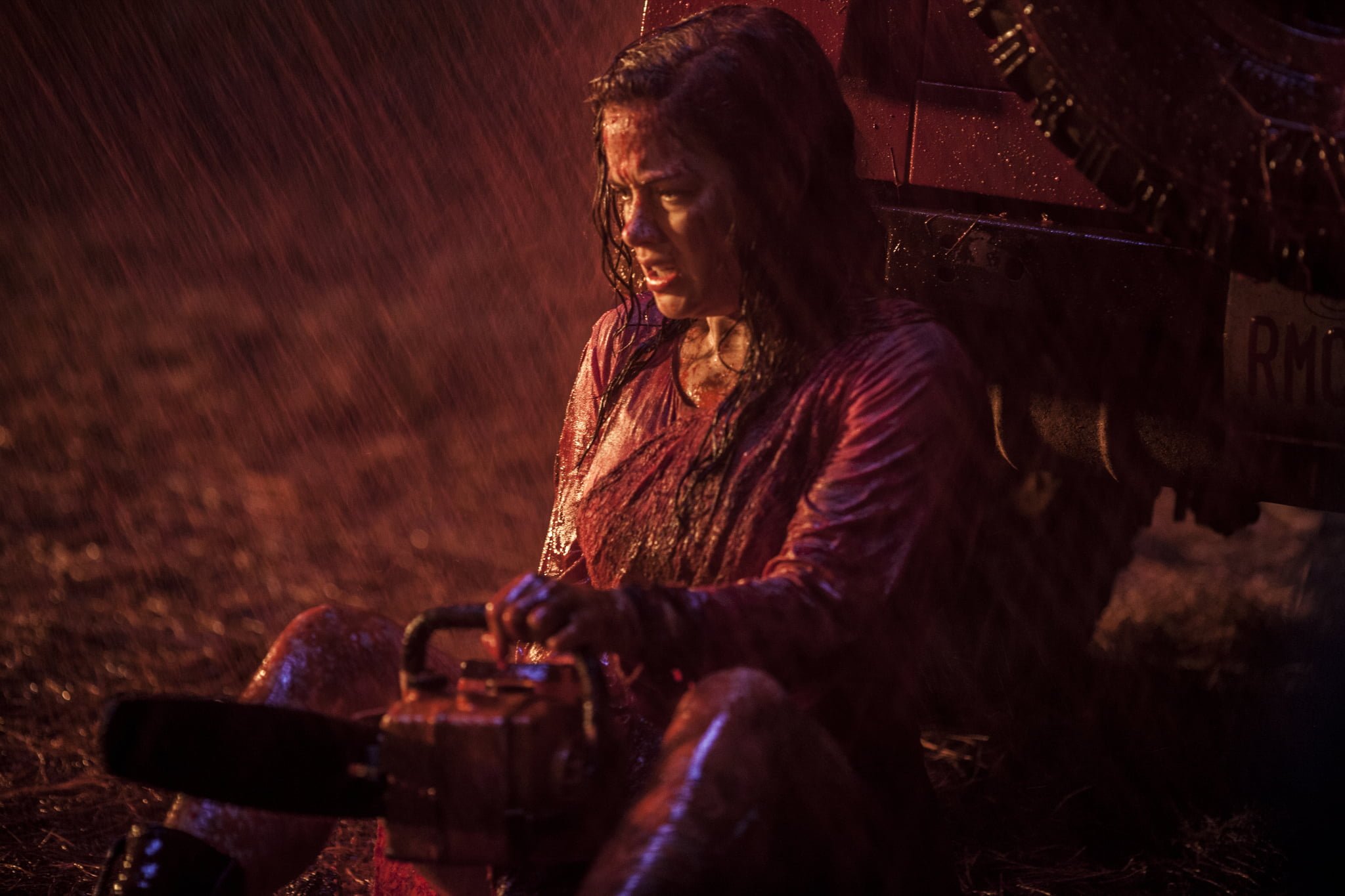
Since 2003’s The Texas Chainsaw Massacre, remakes and reboots have been at the forefront of horror cinema. Sometimes it’s for the better, and sometimes not so much. So when the remake of Evil Dead was announced in 2013, I was intrigued to see what direction they would go with. Would they do a straightforward retelling a-la The Texas Chainsaw Massacre? Or would they go the other direction and tell a whole new story, detracting from much of the source material, a-la Friday the 13th? To my surprise, Evil Dead fell somewhere in between, giving us a new story and cast of characters, while keeping the familiar items we wanted to see return. Adding to my surprise and delight was a new main character and badass final girl, Mia Allen.
We are introduced to Mia as a girl trying to break free from her addiction to heroin with the help of her friends and brother by bringing her to their remote cabin in the woods while she goes cold turkey. She sits atop an old, broken-down Oldsmobile (a subtle nod to the original film) while backlit by the sunset. In only the first few minutes of the film, it’s made clear that Mia will be a different kind of main character than Ash from the beloved original series. She has a troubled backstory; she suffers from addiction, she singlehandedly took care of her mother while she was dying, and she’s been estranged from her brother for some time. Mia is also just plain likable. Sure, there is some animosity between her and her brother, but she is never rude to him or their friends about their past, or why they are at the cabin in the first place. Her goal is simple: get better.
All this makes her an extremely well-rounded character and makes us care for her right off the bat. She’s vulnerable, bold, courageous, and smart. She even has one of my favorite lines in the whole movie: “You shouldn’t have touched anything from that basement.” Thank you! That’s exactly what we were all thinking too. So when Mia ultimately becomes possessed by the demon lurking in the woods, there’s a greater sense of urgency for her to be saved in the end. Even as a deadite, Mia is so fascinating to watch: the face twitching, the stare of death with her yellow eyes, gut-wrenching screams, and that demonic voice from hell. Of course, I have to acknowledge Jane Levy for giving her all in this performance. She is terrifying as a deadite and totally believable from start to finish. From her drug withdrawals to her total paranoia after being attacked, and finally, to full-blown possession and ultimate fight to the death, Jane Levy is without a doubt deserving of the title of scream queen.
I also can’t leave out how glad I was to see that the filmmakers didn’t try to recreate Ash in any way. Instead, they pass the torch (or chainsaw) to Mia, giving us a strong central female character to resurrect the franchise and give new meaning to the definition of final girl. Mia’s character arc in the story of becoming possessed by a demon directly reflects the battle in her own life of trying to defeat her internal demons. Seeing her take a chainsaw to the Abomination, her “demonic” other self, is the ultimate catharsis in this film. It is her acknowledging the former self that she will no longer be held in their control. The film then ultimately ends where it all started: Mia is outside the cabin, alone, backlit by the morning sun, only she is now a freed person with a new lease on life and a chance to start again.
The fact that this girl can literally go to the depths of hell and come back stronger is part of the reason we like her so much. I think many of us can empathize with her because, on a deeper level, we want to be able to face our own demons head-on and win the battle in a blaze of glory. Jane Levy deserves so much credit for making this character memorable, and Mia Allen is one of the coolest and baddest final girls in recent horror history.
Editorials
‘Doctor Sleep’ and the Power of Found Family
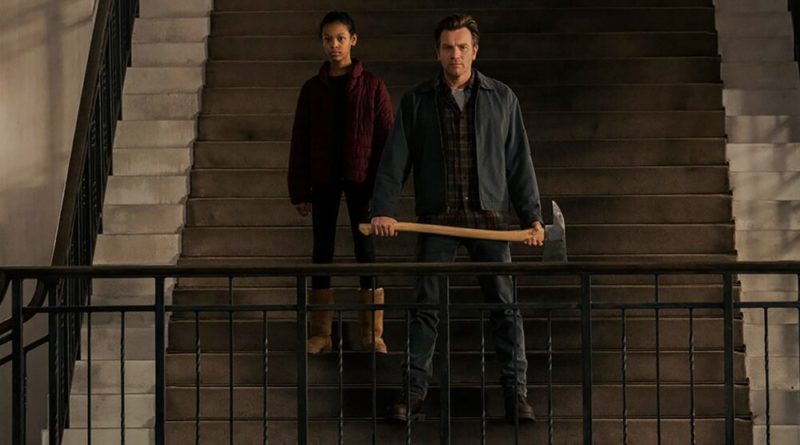
“It seems to me you grew up fine son. But you still owe a debt. Pay it.” These are the final words of Dick Halloran, as portrayed by Carl Lumbly in the 2019 film Doctor Sleep. The “last dream” Dan has of his most trusted mentor always seemed the film’s most striking line. It’s a sharp, pointed statement, a thesis in my eyes of what King’s story says at large about family.
Exploring Doctor Sleep’s Theme of Family and Trauma
Beyond the technical attention to detail in the film, Mike Flanagan’s adaptation of Doctor Sleep has an incredible amount of heart. It may be King’s most human story since The Talisman, and it follows up the tragedy that was Kubrick’s The Shining with a film that is thrilling, horrifying, and ultimately filled with love. Because it’s truly a story about refusing to shut out the past and learning to accept trauma. Not only for yourself, but for the good of your family, wherever that family comes from.
The horror it evokes is not often the horror of inhuman monsters; the true horror of Doctor Sleep is that of people incapable of accepting the horrible things that have happened to them, incapable of accepting the pain of life. Doctor Sleep juxtaposes two ways of how a found family is made, and shows how one is unmade by a refusal to face its problems. The greatest evil in the film is of being incapable of building community and growing, but still masquerading as “family”. And the greatest beauty it has to offer is the beauty of accepting your trauma for the good of the ones you love.
The Flawed Philosophy of the True Knot
Despite carrying the outward appearance of a happy found family, the True Knot are really only one in the loosest of terms. A group of extremely long-lived psychic vampires, the source of their “immortality” is appalling: they consume the shine of children through torturing and eating their victims’ spirits alive. They travel in a caravan of vehicles, though still frozen in time. Hopping from place to place, they assimilate whoever is useful to the group, promising them whatever they’d like. They skulk languidly, to beaches and campsites, wandering without care until it’s time to feast again.
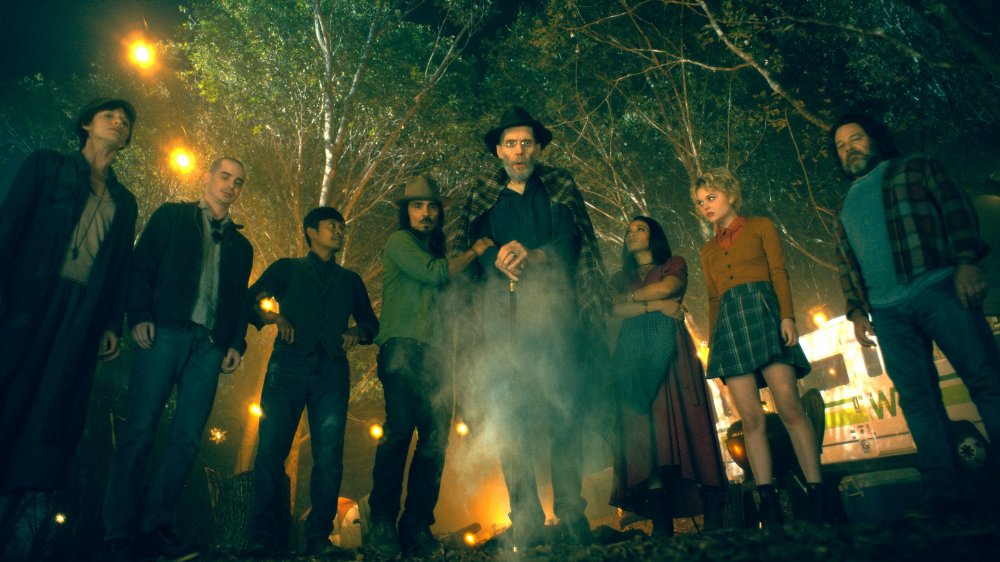
The True Knot as a Corrupted Found Family Structure
They are the quintessential image of a family on vacation, an eternal vacation, phased out of the pains of the real world. They live not only by the hunt for those with shine, but by a lie of unending comfort and happiness. This is why, fundamentally, the philosophy of the True Knot is broken. The True Knot are incapable of willingly struggling, of building something difficult. They cannot build a self-sustaining, long-lasting community, behaving more like a lackadaisical militia with shared goals.
They move around acting as if they owe nothing to anyone, taking and taking without ever giving or creating. They never have to unpack their traumas; they never have to listen to the advice of others; the latter is one of the key reasons that almost all of True Knot’s members die in Dan’s ambush at all. Rose does underestimate Dan and Abra despite Crow Daddy’s warnings. Everyone outside the group is labeled a “rube”, and that hubris is an intrinsic blind spot that ends in a bloodbath.
The Macabre Impermanence of the True Knot’s Existence
It’s no coincidence that their violent deaths, termed “cycling”, leave nothing but smoke behind; they’re transparent, there is no substance left of them, their potential for growth and true life traded away for something wasted and wispy. In a particularly haunting moment in the film, the centuries old Grandpa Flick begins to cycle and admits that after all he’s done, he is still truly afraid to die. Rose immediately cuts him off, eulogizing his strength and legend, denying the reality of Flick’s fear so as to not break the illusion. She’s acutely aware that none of them can handle that fear, so they simply opt not to.
Flick cycles into nothingness, the little steam that’s left behind in his wake is eaten up by the remaining members of the True Knot. There’s a macabre impermanence that none of them are able to face, and every time one of them dies, they die in a way that reminds them of how ephemeral their lives are. But there’s no time to reflect, because there was never enough time to reflect under the philosophy of the True Knot.
How the True Knot’s Ideology Dooms Them
Their attitude, that inability to accept fear and pain, to grow and communicate, is the reason they’ve doomed themselves long before Dan and Abra come into the picture.
There is no better example of a victim of the True Knot’s mentality, of their quest to shut out communication and ignore their problems, than the tragedy of Snakebite Andi.
Snakebite Andi: A Mirror to Dan Torrance’s Struggle
Despite how different they are on the surface, both King and Flanagan take great pains to contrast Andi and Dan: both start off as profoundly broken people with the shine, even utilizing similar abilities. Both are stuck in the past, gripped by their traumas of domestic abuse and looking for some way to numb the pain. Both are taken in by others who seemingly want them to heal, and both end up dying to protect what they love; they both even die smiling. But what they really end up as are two different sides of the same coin: Andi, who lets her past pain consume her, and Dan, who accepts the pain as part of the journey and learns to accept it for Abra.
Andi’s intentions and how she uses her shine are noble, and her actions are justified: she leaves a mark on vile, abusive men, forcing them to reveal who they really are and branding them as predators to protect other girls. But it’s important to also acknowledge that as cathartic as it is to watch her do this, she ultimately is still self-medicating with her vigilantism, the same way Dan does with his alcohol. She is a child only a little older than Abra when she joins the True Knot, and it’s insinuated heavily throughout the film (and stated outright in the novel) that she is a CSA survivor who was abused by her father.

How Rose the Hat Exploits Trauma to Build False Loyalty
She’s lured into becoming a member of the True Knot because Rose preys on her greatest desire: silencing that feeling of shame inside of her over the abuse she’s suffered. Rather than taking the time to explain why there’s nothing shameful about what’s happened to her, that she is not lesser for her troubles, Rose tells her she can shut out that pain and escape it if she simply becomes one of them.
Andi’s arc is one of denying her trauma to try and remain eternally strong and untouchable, to be the predator rather than the prey, even if it hurts other children. She’s deeply hurt, but her supposed mentor is no Dick Halloran. Rose doesn’t give her the mental and emotional tools to work past the pain the way Dick gives Dan the lockboxes and guidance he needs. Instead, she chooses to bottle up her fear and her anger, to suppress her rage and her suffering.
Andi’s Tragic End as a Result of Emotional Suppression
And in the end, she’s literally blinded by that rage; shot by Billy Freeman as she gloats over Danny, and that lie Rose sells her ends up killing her. Andi’s heartbreaking death is a final scream of indignation into the void, projecting all her worst fears and anger onto a stranger, thinking she’s gotten the upper hand by never accepting that pain and fear.
Dan on the other hand, how he lives and how he dies, is the essence of what a real found family should do for you: help you accept the pain, and prevent it from harming the ones you love, so that they can grow and protect others themselves.
Dan Torrance’s Powers and the Compassion Behind Them
Both Dan and Andi have incredibly strong powers of suggestion, but how they function is radically different. Among Dan’s many shining tricks is one similar to Andi’s ability to “push” people into action or into a pattern of memory. However, Dan’s “push” is used differently. Andi forces people to remember the horrible things they’ve done, a reflection of her own fears and sense of shame. But Dan uses it to reassure those dying in the hospice by connecting them to memories of their family.
It’s a great irony then that in the most emotionally crushing scene of the movie, Dan’s confrontation with Jack’s ghost, that he cannot get Jack to connect to the memories. His abilities are worthless in this moment. Jack Torrance, under the guise of being the Overlook bartender Lloyd, has turned his back on the truth of what happened to his family; he lives in an illusory reality, a lie that the alcohol he drinks to forget is a perfect “eraser” on the blackboard that is his mind.
Jack Torrance as a Cautionary Parallel to the True Knot
Jack Torrance was a man whose anger issues, his insecurity and inability to provide for his family, and his own history of being abused by his father Mark, were never confronted. He stewed in the suffering, sat in a comfortable lie that he could avoid dealing with his problems, that he could use the alcohol to isolate and disconnect from his family rather than embrace them. He was sold on the same lie Rose sells the True Knot, and it’s most evident in what they both want: more time. Jack’s speech sounds similar to the speech Rose gives Andi about her youth, emphasizing a desire to retreat into comfort:
“A man tries. He provides. But he’s surrounded by mouths. That eat, and scream, and cry, and nag. So, he asks for one thing, just one thing for him. […] to take the sting out of those days of the mouths, eating, and eating, and eating everything he makes, everything he has. […] Those mouths eat time. They eat your days on Earth. They just gobble them up. It’s enough to make a man sick. And this… is the medicine.”
Dan’s Breaking of the Torrance Cycle in Doctor Sleep
Even as a spirit with all the time in the world, the same as Rose who can stretch years into centuries, Jack can never move on. There’s not enough time, and there never will be when you don’t want to face reality. He’s so angry with Dan trying to show him the truth that he tries to drag his son down to his level, goading him to relapse, to block out the pain.
But it fails, because of the family and the purpose Dan finds with Dick, Billy, and Abra. It’s Abra’s call that pulls him away from Jack, and it’s Abra’s voice that frees him from the influence of the Overlook long enough to save her.
Dan, Abra, the Worthwhile Pain of Human Connection in Doctor Sleep
Despite all that’s happened to him, despite all of his doubts and self-hatred and fear, despite being literally possessed by the physical embodiments of all his childhood trauma, it’s this found family that teaches Dan to face his problems. He takes those painful memories and fears as a part of himself, so that Abra isn’t burdened by them.
He loses a friend along the way, he sacrifices himself, and ultimately, Dan pays the debt Dick was talking about: he protects and saves Abra from Rose, and then from the spirits that haunted him. In his death, destroying the Overlook, he saves countless others who might have fallen victim to the dark push of the hotel. He ends the cycle of escapism that began with his father, finally able to look his mother in the eyes in a way he never could in life.
Doctor Sleep as a Testament to Pain, Connection, and Hope
At its core, Doctor Sleep is a story about how fostering true found family is not a painless experience. It isn’t a joyride. Often it starts from a place of true hopelessness. And it can’t be done without self-actualization, self-acceptance, and the willingness to sacrifice for others. The pain of human connection, the risk of being hurt or failing or losing loved ones close to you, is ever present. There is no lie that will help you escape that.
But that pain is worthwhile. It helps you connect and speak to others on a deeper level. There is no perfect eraser for the anguish of life, but with the right people to guide you, to pull you out of the mires of suffering, that anguish can become something beautiful. It can become a lesson. A shield, passed from person to person. An indelible memory of love despite it all, shining even in the darkest of places.
Why Doctor Sleep’s Message Endures
Doctor Sleep shows us that there is no such thing as too far gone if you carry your family with you. If you carry them with you, in memory and in spirit, what Abra says rings true: we go on after, regardless of what has happened to us.
Editorials
Why ‘Stranger Things’ Fans Cannot Acknowledge Billy is a Racist
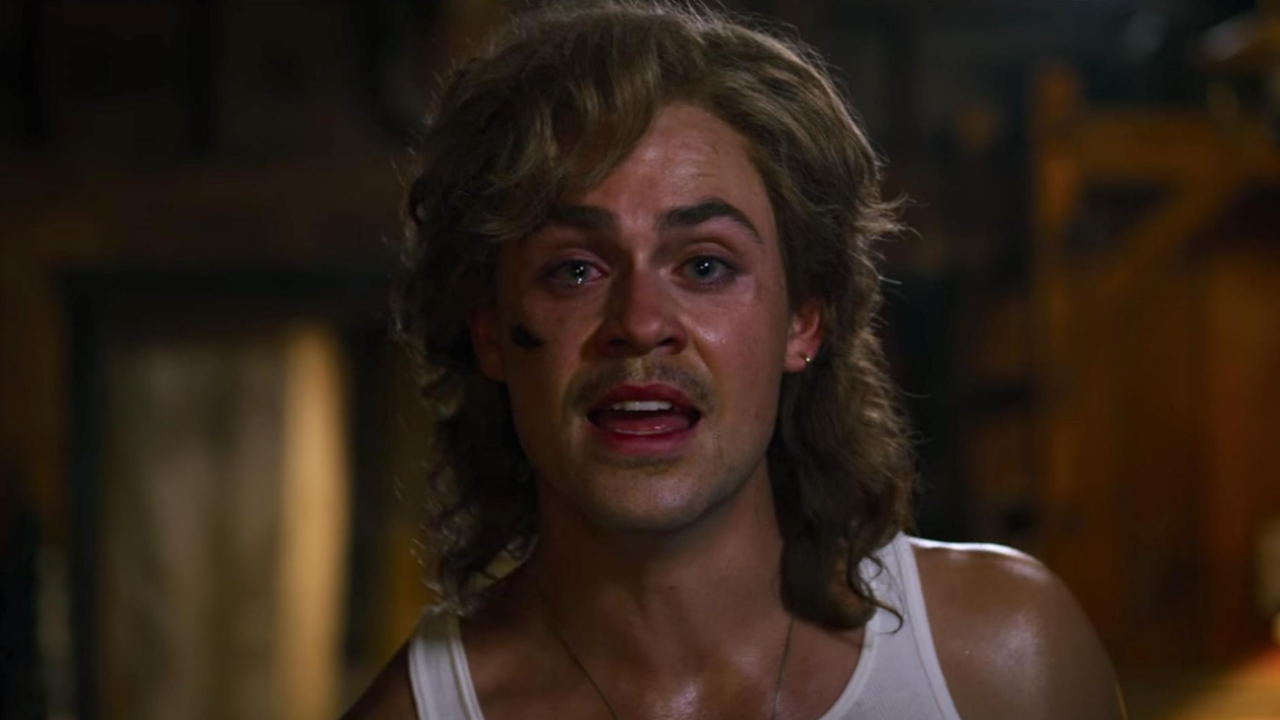
A new season of Stranger Things is upon us, and unfortunately, that always brings some baggage with it. As someone who has watched the show since it premiered on Netflix in 2016, I have witnessed the highs, lows, and questionable moments in real time. I have also seen this show unwittingly bring out the worst in its fandom. While I have many thoughts about all the problematic noise that surrounds the series, I am here with a very specific gripe today. I am not going to hold your hand when I say Billy Hargrove (Dacre Montgomery) is a racist. However, I will unpack some of the reasons I think it’s interesting that this fanbase (and some of the actors in this ridiculously large cast that should have been trimmed seasons ago) refuse to state the obvious.

Billy Hargrove Never Hides It
I get it. Billy Hargrove is hot when we first meet him in season 2. He looks like the typical ’80s heartthrob made famous by hotties of that bygone era. He could’ve easily been another Brat Pack actor next to Emilio Estevez, Rob Lowe, and Judd Nelson. However, all of that goes out of the window when we see how he abuses his step-sister, Max (Sadie Sink). We soon discover the bad boy image is not an act but simply one layer of this sociopath. Things quickly escalate in this season of Stranger Things, and Billy becomes the racist that Lucas (Caleb McLaughlin) will have to face this time out.
While the rest of his supposed friends are battling supernatural evils, Lucas always ends up the target of local racists. I have given up on his sidequests being something less targeted, or for anyone but his little sister Erica (Priah Ferguson) to ever stick up for him. The squad will battle Vecna, but Lucas will have to fend off some version of Mike Pence as a child.
Remember Script Analysis?
Anyways, the Duffer Brothers make it very obvious that Billy is an awful human. He even tells Max, “There are certain types of people in this world that you stay away from, and that kid, Max, that kid is one of them. You stay away from him, you hear me? Stay away.” This is before he decides to start taking a more hands-on approach with Lucas, much like he does with Max. However, too many fans like to paint the narrative that Billy isn’t a racist sociopath. They need him to be misunderstood, even broken, and would like to blame his abusive dad for the trauma he inflicts on his sister and one of the very few Black kids in town. As if all abused kids go on to be MAGA, and that pipeline is to blame for where we are now.
This isn’t helped by the actor also trying to get his character off the hook. His co-star’s comments on his acting being purposely misinterpreted is also another issue with this conversation. You can complement the complexities of a performance without excusing the character’s behavior. After all, villains can make for compelling TV when utilized correctly. Many viewers who want to romanticize this monster might not realize what they are doing. However, I cannot help but see it because I live in a world that loves to rewrite the facts.
Have You Watched the News?
Billy is much like all the other white guys who do horrendous things. Isms beget isms. Which is why when we see him level up from abusing Max to saying all of the racist parts aloud, I was not surprised. I was also not surprised at how much of the Stranger Things fandom is okay with him beating up on children. Society hates women and will always find a reason to justify racism. So, people can forgive and downplay what Billy does. That’s why many fans were happy to see him make his guest appearance in season 4. Meanwhile, the rest of us are being reminded that the internet, and this fandom specifically, are overwhelmingly white places.
A Tale of Two Actors
To counter Stranger Things fans’ love of Billy the Racist, let us look at how Dacre Montgomery gets treated compared to Caleb McLaughlin. McLaughlin is a member of the main cast and has been with the show since day one. However, his lines at cons are considerably emptier than his white counterparts. In the beginning, people pretended it wasn’t anti-Blackness. White fans claimed they didn’t like him because his character was mean to Eleven in the first season. I could write another essay on how he wasn’t mean, and even if he was, actors are not their characters. However, it doesn’t matter because we all know racism is the reason.
Meanwhile, Montgomery does very well. All of the people yelling about his character being misunderstood make their way to his table like he’s giving away money. How many times did we watch Billy abuse Max in various ways? How many times did we watch him abuse Lucas and escalate it to the point that only the most dense among us could miss the obvious racism on display? Yet, people still want those pictures and autographs. Coincidence?

Why This Bugs Me
As someone who cannot quit this show, I have been very vocal about my issues with Stranger Things. The refusal to kill any of the way too large main cast remains one of my biggest pet peeves. The Duffer Brothers having a hard time understanding that writing a period piece doesn’t necessarily mean you are writing for the audience of that era is also a bone of contention. Specifically, when Jonathan Byers (Charlie Heaton) took photos of Nancy (Natalia Dyer) undressing without her knowledge. In today’s context, we understand that it is assault and a severe invasion of privacy and no longer let that slide.
I am also salty about how every racist who is an aspiring Fox News reporter in Hawkins, Indiana, finds Lucas each season. Which is why it is so wild that I think the biggest issue with Billy Hargrove is how many fans of the show receive him.
What It Says About Society
I think Billy could’ve been written with a little more subtlety. I am also again very tired of Lucas’ storyline always being about racism and attempted hate crimes. Why can’t he have magical fights in The Upsidedown like everyone else? Yet, what really salts my tines is the internet’s willingness to overlook bigotry and excuse hatred. It’s extra triggering as I am trying to survive this second Trump term. I watched this country fail as fools tweeted, “all the candidates are the same.” White feminism allowed hateful relatives a seat at the holiday tables after voting away the few rights most of us had. Meanwhile, Judy wanted to wear a blue bracelet to let you know she cares. However, she doesn’t care enough to be serious about any actual activism. The Stranger Things fandom is unsurprisingly a mirror of society.
The same people who look at white male terrorists and blame the girls who wouldn’t go to prom with them. Or the ones who think the Black victims of police brutality might be to blame for the cop’s reaction. Those are the people who don’t understand that Billy is a raging racist. I think this is one Stranger Things character that the Duffers might have put the most thought behind. It’s a shame the toxic fandom surrounding the show swallowed him up and learned nothing.



